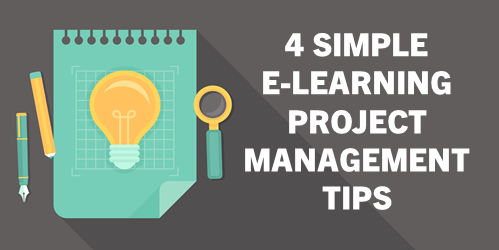 I get a lot of project management questions, specifically how to keep the projects moving forward successfully. The two most essential elements are expectations and communication.
Understand the Purpose of the Course
When meeting with clients it’s important to understand and identify the learning objectives. And then from there, to craft a good learning plan.
What do they need to know? How do we know they know it? How will the learn it? OK, let's build it!
Create a Service Level Agreement
What is the final product going to look like? What are ...
I get a lot of project management questions, specifically how to keep the projects moving forward successfully. The two most essential elements are expectations and communication.
Understand the Purpose of the Course
When meeting with clients it’s important to understand and identify the learning objectives. And then from there, to craft a good learning plan.
What do they need to know? How do we know they know it? How will the learn it? OK, let's build it!
Create a Service Level Agreement
What is the final product going to look like? What are ...
Read the full article
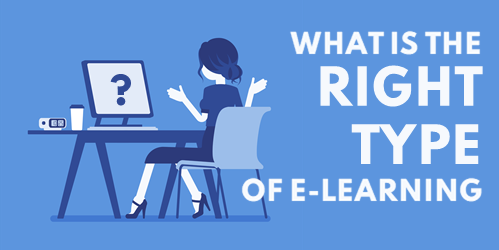 My hunch is the most e-learning courses are explainer-type content, heavy on content, but light on applied learning. This is fine, especially since most of the learning happens outside the course; however, good e-learning courses should be more than content.
Start with Clear Objectives
Most courses are content-heavy because of compliance requirements. And the main objective is certified exposure to content by December 31. If you're building courses based on performance expectations, you need to start with clear objectives.
My hunch is the most e-learning courses are explainer-type content, heavy on content, but light on applied learning. This is fine, especially since most of the learning happens outside the course; however, good e-learning courses should be more than content.
Start with Clear Objectives
Most courses are content-heavy because of compliance requirements. And the main objective is certified exposure to content by December 31. If you're building courses based on performance expectations, you need to start with clear objectives.
- What are they to do?
- How do you know they can do
...
Read the full article
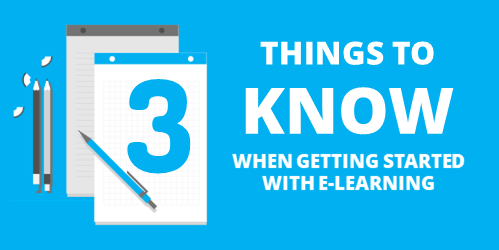 I was reviewing some older presentations I found a slide regarding the topic of getting started with e-learning. On the slide I offered three helpful tips when getting started that still hold true today.
An E-Learning Course is Different from a Classroom Session
A challenge a lot of new e-learning developers have is that they start with existing content from classroom training. This is usually in PowerPoint; and it's easy enough to import a PowerPoint slide into an e-learning application, add a quiz, and call it good.
This is fine ...
I was reviewing some older presentations I found a slide regarding the topic of getting started with e-learning. On the slide I offered three helpful tips when getting started that still hold true today.
An E-Learning Course is Different from a Classroom Session
A challenge a lot of new e-learning developers have is that they start with existing content from classroom training. This is usually in PowerPoint; and it's easy enough to import a PowerPoint slide into an e-learning application, add a quiz, and call it good.
This is fine ...
Read the full article
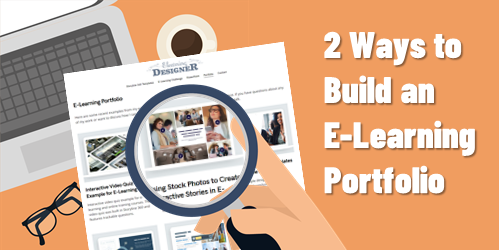 You want to build an e-learning portfolio, but not sure where to start?
At its core, the work portfolio represents your skills and expertise. For some people, the portfolio is their resume, and they build it to share what they know. And for others, the portfolio shows their projects as part of the journey that needs to be documented.
During the initial planning, decide if you want the portfolio to be static where you only do occasional maintenance and updates. Or if you want a site that's more dynamic and continually ...
You want to build an e-learning portfolio, but not sure where to start?
At its core, the work portfolio represents your skills and expertise. For some people, the portfolio is their resume, and they build it to share what they know. And for others, the portfolio shows their projects as part of the journey that needs to be documented.
During the initial planning, decide if you want the portfolio to be static where you only do occasional maintenance and updates. Or if you want a site that's more dynamic and continually ...
Read the full article
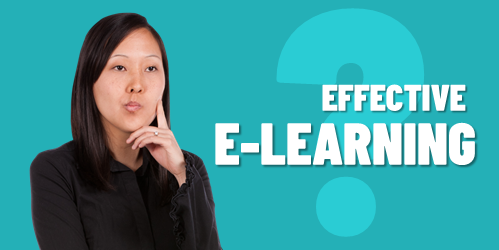 One mistake many e-learning experts make is that they talk about "e-learning" as if it's a single thing and always focused on performance improvement. They talk about engagement and interactivity and measurable objectives. Those are all good things and super important for many courses. However, anything not linked to performance is then considered ineffective.
But are those things always the measure of effective e-learning?
A common challenge is your organization focuses more on getting content out and less about learning engagement, and probably not about measurable improvement. This may appear to be ...
One mistake many e-learning experts make is that they talk about "e-learning" as if it's a single thing and always focused on performance improvement. They talk about engagement and interactivity and measurable objectives. Those are all good things and super important for many courses. However, anything not linked to performance is then considered ineffective.
But are those things always the measure of effective e-learning?
A common challenge is your organization focuses more on getting content out and less about learning engagement, and probably not about measurable improvement. This may appear to be ...
Read the full article
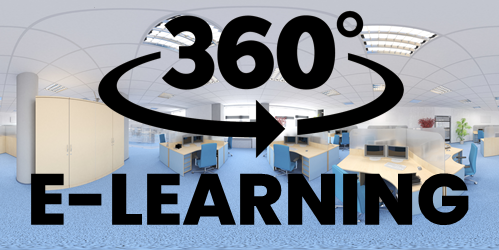 Storyline 360 includes a 360° image feature where one can insert interactive markers and labels. On top of that, one can also leverage all the other capabilities of Storyline and layer content on top of the image.
Last week, the e-learning challenge was to create some 360° image interactions. Some of the submissions intrigued me with how they used other layers and variables to track movement through the 360° image.
Here are four examples from the weekly challenge that demonstrate this:
360° Image Example: Once in a ...
Storyline 360 includes a 360° image feature where one can insert interactive markers and labels. On top of that, one can also leverage all the other capabilities of Storyline and layer content on top of the image.
Last week, the e-learning challenge was to create some 360° image interactions. Some of the submissions intrigued me with how they used other layers and variables to track movement through the 360° image.
Here are four examples from the weekly challenge that demonstrate this:
360° Image Example: Once in a ...
Read the full article
 When I create presentations for our webinars or workshops, I like to use the imagery from our e-learning community or the Articulate website. They're on-brand and with the illustrations, we have a lot from which to choose. When I created training at previous organizations, I did something similar.
If you need to collect images from your company site to use in your training this tip should help.
Usually when I find an image, I right-click to save. However, this is a bit ...
When I create presentations for our webinars or workshops, I like to use the imagery from our e-learning community or the Articulate website. They're on-brand and with the illustrations, we have a lot from which to choose. When I created training at previous organizations, I did something similar.
If you need to collect images from your company site to use in your training this tip should help.
Usually when I find an image, I right-click to save. However, this is a bit ...
Read the full article
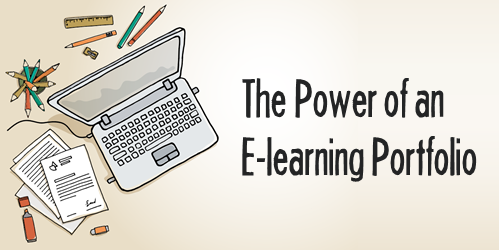 At one point, I was hiring an e-learning course developer. I received hundreds of qualified applications; however I couldn't screen them all, so I created a first filter based on their work portfolios. Most of the applicants tended to fall into one of two camps: they didn’t have an e-learning portfolio or the projects they worked on were proprietary so they couldn’t share them.
I know that many of you are in the same boat. And based on the tons of emails I get about finding work in this industry, ...
At one point, I was hiring an e-learning course developer. I received hundreds of qualified applications; however I couldn't screen them all, so I created a first filter based on their work portfolios. Most of the applicants tended to fall into one of two camps: they didn’t have an e-learning portfolio or the projects they worked on were proprietary so they couldn’t share them.
I know that many of you are in the same boat. And based on the tons of emails I get about finding work in this industry, ...
Read the full article
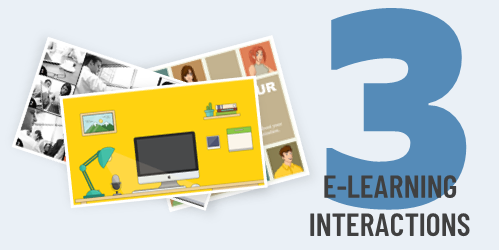 In a recent workshop on creating interactions, we looked at ways to take a single image and create interactive content. It's a good practice activity because many of us aren't graphic designers so it helps us see different ways to use stock imagery that doesn't require a lot of editing. And it gets us to think about interactive content in ways we may not initially consider.
The general idea is to find a single image that you can use for an interaction. A few things I look for:
In a recent workshop on creating interactions, we looked at ways to take a single image and create interactive content. It's a good practice activity because many of us aren't graphic designers so it helps us see different ways to use stock imagery that doesn't require a lot of editing. And it gets us to think about interactive content in ways we may not initially consider.
The general idea is to find a single image that you can use for an interaction. A few things I look for:
...
Read the full article
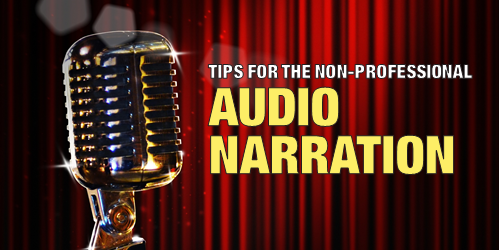 In e-learning software like Storyline 360 and Rise 360 you can record (or import) audio narration into your courses. Since many e-learning developers tend to produce all media that belongs in the course, recording audio narration usually is one of those responsibilities. That means there are a lot of people that record audio narration who aren't trained voice over talent.
If you have money and the time, using professional voice over talent makes sense. But most of us don't have that luxury. So here are some ...
In e-learning software like Storyline 360 and Rise 360 you can record (or import) audio narration into your courses. Since many e-learning developers tend to produce all media that belongs in the course, recording audio narration usually is one of those responsibilities. That means there are a lot of people that record audio narration who aren't trained voice over talent.
If you have money and the time, using professional voice over talent makes sense. But most of us don't have that luxury. So here are some ...
Read the full article
 A guest post by Elizabeth Pawlicki, Training Program Manager, Articulate.
You need a portfolio! Even if you’re not currently looking for a new job, maintaining a portfolio is important as an archive to highlight your work and experience.
In previous posts, we covered what should be in your portfolio and how to build one (with links to some potential sites).
However, I continue to get questions on how to host and manage a portfolio. That's what I'll cover today.
Free Portfolio Site
Recently I came across a free tool called ...
A guest post by Elizabeth Pawlicki, Training Program Manager, Articulate.
You need a portfolio! Even if you’re not currently looking for a new job, maintaining a portfolio is important as an archive to highlight your work and experience.
In previous posts, we covered what should be in your portfolio and how to build one (with links to some potential sites).
However, I continue to get questions on how to host and manage a portfolio. That's what I'll cover today.
Free Portfolio Site
Recently I came across a free tool called ...
Read the full article
 I love free icons and illustrations that can be used in e-learning. Here are some good ones for the health and medical industries courtesy of Health Icons. What's cool is that the icons are open source and free to use in commercial projects without any attribution requirement.
Why are the icons free?
"Health Icons is a volunteer effort to create a ‘global good’ for health projects all over the world. These icons are available in the public domain for use in any type of project. The project is hosted by ...
I love free icons and illustrations that can be used in e-learning. Here are some good ones for the health and medical industries courtesy of Health Icons. What's cool is that the icons are open source and free to use in commercial projects without any attribution requirement.
Why are the icons free?
"Health Icons is a volunteer effort to create a ‘global good’ for health projects all over the world. These icons are available in the public domain for use in any type of project. The project is hosted by ...
Read the full article
 I get a lot of project management questions, specifically how to keep the projects moving forward successfully. The two most essential elements are expectations and communication.
Understand the Purpose of the Course
When meeting with clients it’s important to understand and identify the learning objectives. And then from there, to craft a good learning plan.
What do they need to know? How do we know they know it? How will the learn it? OK, let's build it!
Create a Service Level Agreement
What is the final product going to look like? What are ...
I get a lot of project management questions, specifically how to keep the projects moving forward successfully. The two most essential elements are expectations and communication.
Understand the Purpose of the Course
When meeting with clients it’s important to understand and identify the learning objectives. And then from there, to craft a good learning plan.
What do they need to know? How do we know they know it? How will the learn it? OK, let's build it!
Create a Service Level Agreement
What is the final product going to look like? What are ...
 My hunch is the most e-learning courses are explainer-type content, heavy on content, but light on applied learning. This is fine, especially since most of the learning happens outside the course; however, good e-learning courses should be more than content.
Start with Clear Objectives
Most courses are content-heavy because of compliance requirements. And the main objective is certified exposure to content by December 31. If you're building courses based on performance expectations, you need to start with clear objectives.
My hunch is the most e-learning courses are explainer-type content, heavy on content, but light on applied learning. This is fine, especially since most of the learning happens outside the course; however, good e-learning courses should be more than content.
Start with Clear Objectives
Most courses are content-heavy because of compliance requirements. And the main objective is certified exposure to content by December 31. If you're building courses based on performance expectations, you need to start with clear objectives.
 I was reviewing some older presentations I found a slide regarding the topic of getting started with e-learning. On the slide I offered three helpful tips when getting started that still hold true today.
An E-Learning Course is Different from a Classroom Session
A challenge a lot of new e-learning developers have is that they start with existing content from classroom training. This is usually in PowerPoint; and it's easy enough to import a PowerPoint slide into an e-learning application, add a quiz, and call it good.
This is fine ...
I was reviewing some older presentations I found a slide regarding the topic of getting started with e-learning. On the slide I offered three helpful tips when getting started that still hold true today.
An E-Learning Course is Different from a Classroom Session
A challenge a lot of new e-learning developers have is that they start with existing content from classroom training. This is usually in PowerPoint; and it's easy enough to import a PowerPoint slide into an e-learning application, add a quiz, and call it good.
This is fine ...
 You want to build an e-learning portfolio, but not sure where to start?
At its core, the work portfolio represents your skills and expertise. For some people, the portfolio is their resume, and they build it to share what they know. And for others, the portfolio shows their projects as part of the journey that needs to be documented.
During the initial planning, decide if you want the portfolio to be static where you only do occasional maintenance and updates. Or if you want a site that's more dynamic and continually ...
You want to build an e-learning portfolio, but not sure where to start?
At its core, the work portfolio represents your skills and expertise. For some people, the portfolio is their resume, and they build it to share what they know. And for others, the portfolio shows their projects as part of the journey that needs to be documented.
During the initial planning, decide if you want the portfolio to be static where you only do occasional maintenance and updates. Or if you want a site that's more dynamic and continually ...
 One mistake many e-learning experts make is that they talk about "e-learning" as if it's a single thing and always focused on performance improvement. They talk about engagement and interactivity and measurable objectives. Those are all good things and super important for many courses. However, anything not linked to performance is then considered ineffective.
But are those things always the measure of effective e-learning?
A common challenge is your organization focuses more on getting content out and less about learning engagement, and probably not about measurable improvement. This may appear to be ...
One mistake many e-learning experts make is that they talk about "e-learning" as if it's a single thing and always focused on performance improvement. They talk about engagement and interactivity and measurable objectives. Those are all good things and super important for many courses. However, anything not linked to performance is then considered ineffective.
But are those things always the measure of effective e-learning?
A common challenge is your organization focuses more on getting content out and less about learning engagement, and probably not about measurable improvement. This may appear to be ...
 Storyline 360 includes a 360° image feature where one can insert interactive markers and labels. On top of that, one can also leverage
Storyline 360 includes a 360° image feature where one can insert interactive markers and labels. On top of that, one can also leverage  When I create presentations for our webinars or workshops, I like to use the imagery from our
When I create presentations for our webinars or workshops, I like to use the imagery from our  At one point, I was hiring an e-learning course developer. I received hundreds of qualified applications; however I couldn't screen them all, so I created a first filter based on their work portfolios. Most of the applicants tended to fall into one of two camps: they didn’t have an e-learning portfolio or the projects they worked on were proprietary so they couldn’t share them.
I know that many of you are in the same boat. And based on the tons of emails I get about finding work in this industry, ...
At one point, I was hiring an e-learning course developer. I received hundreds of qualified applications; however I couldn't screen them all, so I created a first filter based on their work portfolios. Most of the applicants tended to fall into one of two camps: they didn’t have an e-learning portfolio or the projects they worked on were proprietary so they couldn’t share them.
I know that many of you are in the same boat. And based on the tons of emails I get about finding work in this industry, ...
 In a recent workshop on creating interactions, we looked at ways to take a single image and create interactive content. It's a good practice activity because many of us aren't graphic designers so it helps us see different ways to use stock imagery that doesn't require a lot of editing. And it gets us to think about interactive content in ways we may not initially consider.
The general idea is to find a single image that you can use for an interaction. A few things I look for:
In a recent workshop on creating interactions, we looked at ways to take a single image and create interactive content. It's a good practice activity because many of us aren't graphic designers so it helps us see different ways to use stock imagery that doesn't require a lot of editing. And it gets us to think about interactive content in ways we may not initially consider.
The general idea is to find a single image that you can use for an interaction. A few things I look for:
 In e-learning software like
In e-learning software like  A guest post by Elizabeth Pawlicki, Training Program Manager, Articulate.
You need a portfolio! Even if you’re not currently looking for a new job, maintaining a portfolio is important as
A guest post by Elizabeth Pawlicki, Training Program Manager, Articulate.
You need a portfolio! Even if you’re not currently looking for a new job, maintaining a portfolio is important as


0
comments